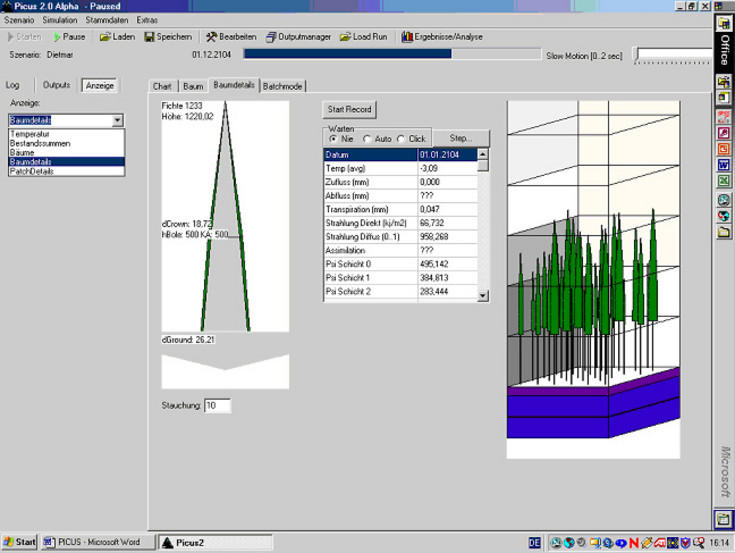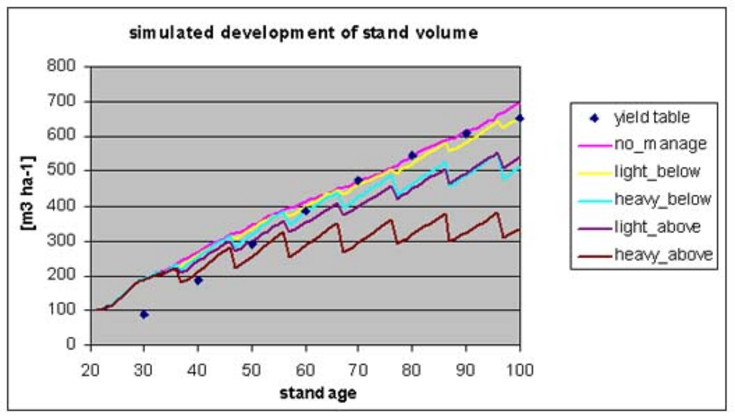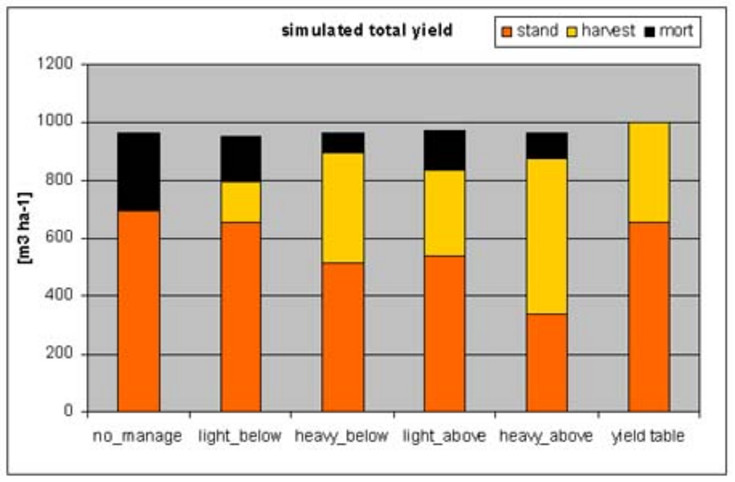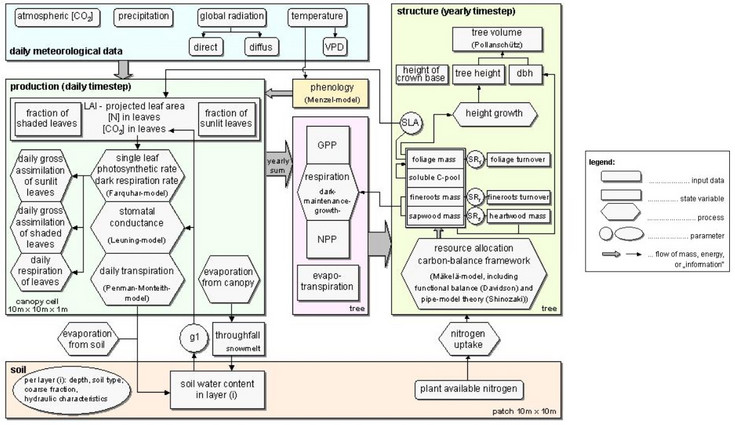PICUS v2.0
PICUS v2.0
The development of the model version PICUS v2.0 has been motivated by criticism of the traditional patch model approach, whereby key physiological processes are not adequately represented (e.g., Norby et al. 2001).



In PICUS v2.0 the spatial structure and general model logic are as implemented in PICUS v1.2, though in an adapted and refined form. For instance, in PICUS v1.2 the vertical dimension of the forest consists of canopy cells of 5m depth. In the model version PICUS v2.0 the resolution of these cells is refined to a depth of 1m, hus obtaining a finer resolution in the information about vertical distribution of leaf area and direct and diffuse radiation in the canopy. Additionally, the one layer bucket model representing soil in PICUS v1.2 has been exchanged for a multi layer soil model. Soil in PICUS v2.0 is represented by any number of soil layers, each characterised by layer depth, soil type, water retention curve, and hydraulic conductivity, allowing for the calculation of vertical water exchange between layers according to Darcy´s law. The model component comprising aggregated growth and allocation functions from PICUS v1.2 is replaced with a completely new growth module considering physiological processes explicitly. Dry matter production (carbon gain) is modelled considering physiological processes on a daily time step. Climate data (temperature, precipitation, global radiation, VPD) are provided on daily basis. Carbon gain is calculated from a simplified version of the biochemical photosynthesis model of Farquhar (Farquhar et al. 1982). Light saturated photosynthetic rate and quantum yield are estimated as a function of temperature, leaf-internal CO2 concentration, and nitrogen concentration in the leaves. Leaf-internal CO2 is modelled as a function of ambient CO2, vapour pressure deficit (VPD), and the water status of the plant which in turn depends on the status of plant available water in the soil. Resource allocation to tree compartments is modelled on an annual timestep on the basis of the carbon – balance framework as proposed by Mäkelä (1986). In the current model version seed production as well as distribution and recruitment of juvenile trees is identical to PICUS v1.4. A flexible management module can be used to simulate the effects of silvicultural treatments on tree and stand development. A schematic illustration of the general model structure is given in Figure below.

